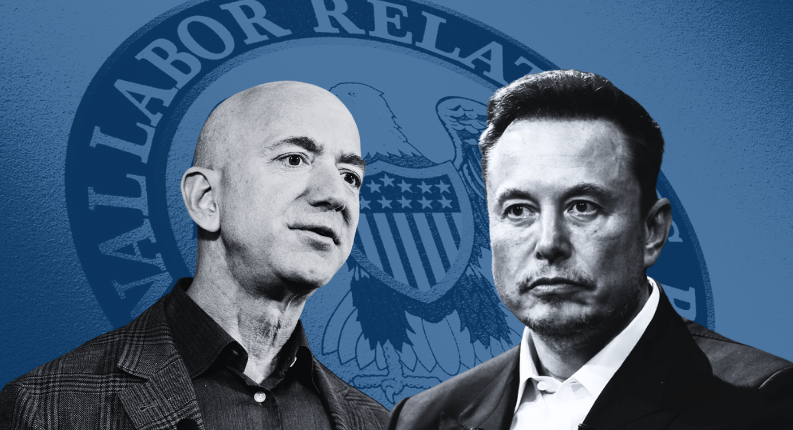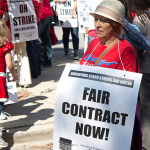The U.S. Department of Labor (DOL) recently announced new employer guidelines to determine whether the individuals who work for them should be classified as employees or independent contractors. The Treasury Department estimates that companies are misclassifying millions of people every year, classifying them as independent contractors when the law says that they should be treated as employees. Some of this rampant misclassification may be the result of misunderstanding of the law, though the Department of Labor asserts that in many cases, “employees may be intentionally misclassified as a means to cut costs and avoid compliance with labor laws.”
Why does it matter how a company is classifying you/an employee to the IRS? Our laws grant fundamental workplace benefits and protections to men and women who are direct employees of an employer. But those classified as independent contractors when they should really be considered employees are cheated out of vital benefits and legal safeguards – from civil rights protections to the legal right to band together and join a union. By misclassifying employees as independent contractors, companies are able to dodge these requirements that help ensure that working people have a basic level of protections on the job and access to a safety net.
According to the DOL, determining whether an employee is an independent contractor comes down to what they call an “economic realities test”: If a person is economically dependent on their employer, they’re an employee. If a person is conducting business independently and is not dependent on their employer, they’re an independent contractor.
This guidance comes at a much-needed time when laws haven’t caught up with the dramatic changes to work in this country and as corporate CEOs have figured out how to rig outdated workplace rules in their favor. Most victims of misclassification are not willingly employed in traditional, full-time, permanent jobs. Businesses have long looked for ways to remove themselves of the responsibilities that come with being an employer by contracting out services like cleaning and security to other companies or hiring employees through temp agencies. More recently, companies are capitalizing off this same work model in the so-called “sharing economy,” where services are provided on-demand through companies like Uber and Lyft by individuals the companies claim are independent contractors, not employees. Advocates of this business model claim they give both employers and employees the advantage of flexibility in hiring and service providing. Yet what’s clear is that the people doing the work are assuming all of the risk of this model while the owners of these companies reap the rewards.
Employers persist in their misclassification, attempting to convince courts and other agencies that their workers are independent contractors in order to avoid their legal obligations to their workers. Here are some examples of how misclassified employees face exploitation:
- Uber, the popular app that allows customers to request drivers on-demand, was recently ordered to pay thousands of dollars in expenses to a California employee who was found to be misclassified as an independent contractor. Uber, like most companies in the so-called “sharing economy,” classifies its employees as independent contractors, claiming to simply be a technology company connecting service-providers to customers. The company has appealed the California Labor Commission’s decision, which will now move to the California courts.
- Walmart outsources logistics operations, pressuring subcontractors to employ warehouse workers for very low pay, often under dangerous conditions. At one subcontractor, workers filed a complaint with Cal/OSHA over the temperature regularly reaching 100 degrees and drivers operating machinery without proper training.
- FedEx Ground misclassifies drivers as independent contractors, denying them the right to organize and protections from discrimination. Numerous federal and state agencies and courts have found the company guilty of this practice, ordering it to pay millions in back taxes.
- Nonfiction television production firms often hire writers and producers as freelancers or indirectly employ them through subcontractors, manipulating outdated employment exemptions to deny these professionals overtime pay and healthcare benefits.
Not only does misclassification lead to low labor standards and erosion of workplace rights for employees; it also costs federal and state governments billions of dollars. According to the DOL, “Employee misclassification generates substantial losses to the federal government and state governments in the form of lower tax revenues, as well as to state unemployment insurance and workers’ compensation funds.” At a time when governments at all levels are facing difficult budget choices and making cuts to programs that Americans depend upon, there is no excuse for allowing so many businesses to cheat the system.
Establishing new, clearer guidelines for employee classification is an important first step, but it’s only just the beginning. If the guidelines aren’t enforced, bad employers will continue exploiting the men and women who work for them and costing taxpayers billions each year. While some companies like on-demand grocery start-up Instacart have moved to reclassify former independent contractors as employees, many corporate CEOs will refuse to follow suit. We need to hold corporations accountable to these new guidelines, because misclassification will continue to cost more and more of us the ability to lead a good life.
Download the PDF: New Guidance to Stop Companies From Misclassifying Employees









After years of doing the same job with the same employer, I was reclassified an “independent contractor” and was stripped of all benefits including healthcare coverage, unemployment insurance and employer federal tax contributions. It’s not just huge corporations that are taking advantage of this scheme, but small businesses as well.
Schools do this, too, at all levels. For example, I was hired as an independent contractor by a school district even though they gave me a full time work schedule that was exactly the same as others who were hired as employees. I’ve also been teaching at a college for several years where 100% of the faculty are hired as independent contractors.
This has been going on in education since the early 2000s. It’s about time DOL did something about it.
I have experienced the same issue with the Ventura County Community College District. Are College’s exempt and allowed to classify Instructors as Independent Contractors? I can’t seem to find anything specific to California College Districts